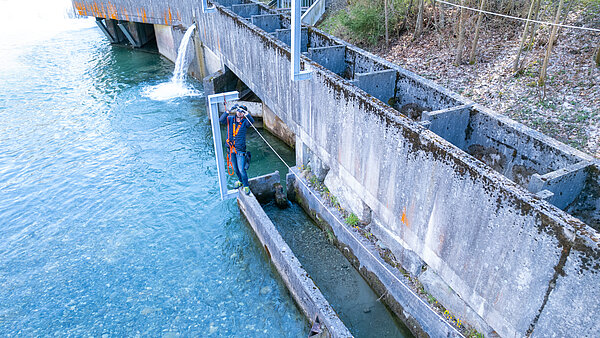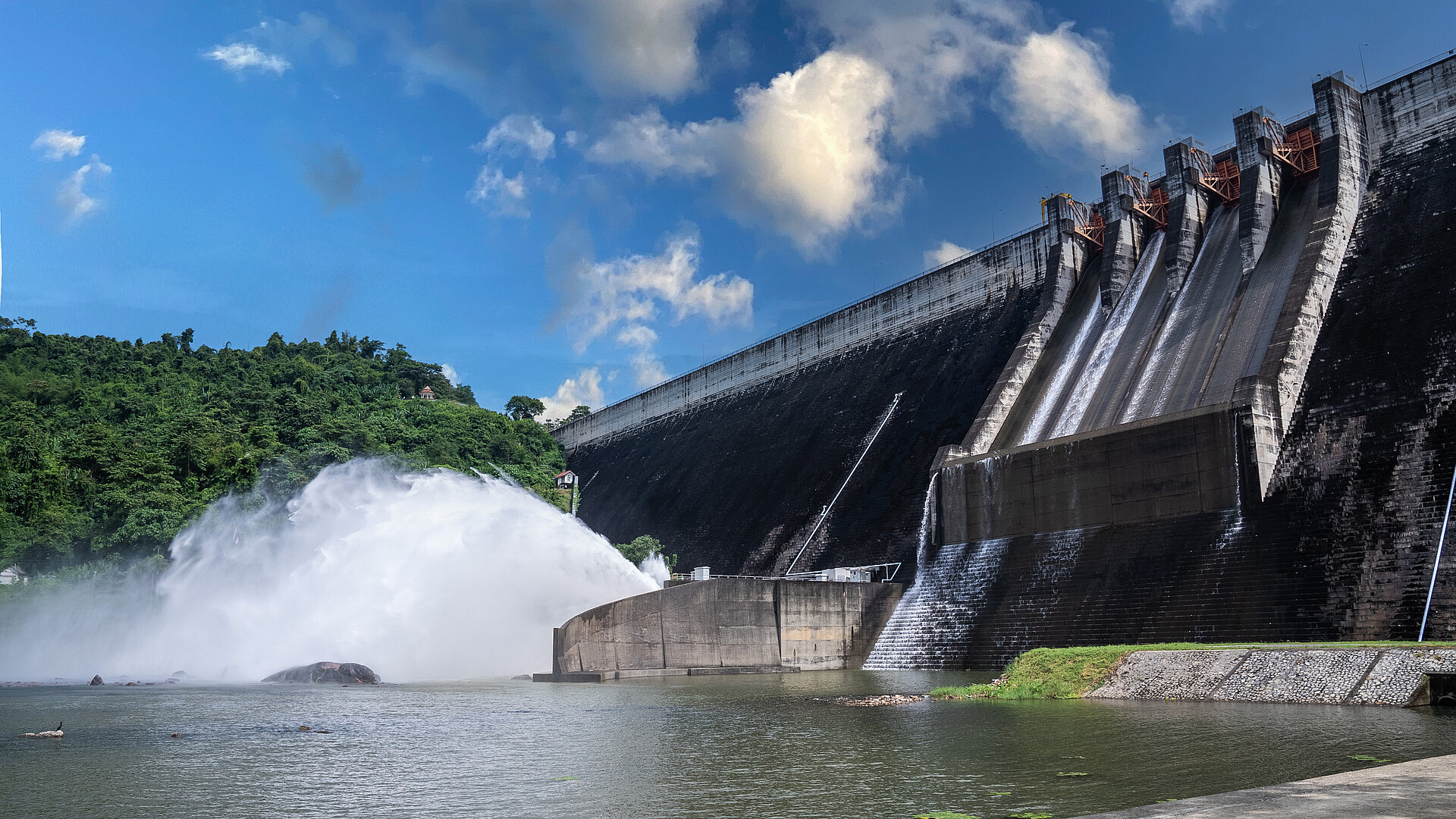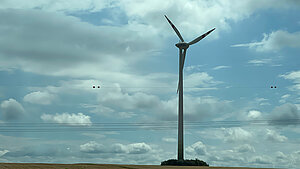Especially in Austria and Switzerland, hydro-electric power plays a fundamental role overall as a renewable energy source in the electricity mix. While in Germany, for example, around 3.8% of the total power generated in 2020 was created through hydro-electric power (source: Bundesverband der Energie- und Wasserwirtschaft/BDEW [German Association of Energy and Water Industries], in the same year in Austria and Switzerland the proportion was about 57% (source: Österreichischen Vereinigung für Kraftwerksbetrieb/ÖVK [Austrian Association for Power Plant Operation] and Bundesamt für Energie/BFE [Austrian Federal Office for Energy]). Because of their topographical circumstances, these two countries have a significant potential for generating electricity from water power.
Considering hydro-electric power holistically, not only are barrages therefore included in this application area, but so too are smaller hydro-electric plants. The modernisation and extension of existing power stations creates challenges which have not so far existed, or else only to a different extent. In this regard, the requirements relating to a fall protection system also change. For example, when building legally prescribed fish passes or ladders, the safety required for the people working on them must also be ensured. This blog post tells you about how hydro-electric power and fall protection interact.
Hydro-electric plant and fall protection
Ongoing and regular servicing and maintenance tasks have to be performed on barrages and turbines. Upgrades to them, and also the creation of fish passes, create a number of dangers for the employees. This makes the use of professional, certified fall protection systems even more important in these areas, and nowadays these systems are indeed legally prescribed.
That was not always the case, because in earlier days the subject of safety and of fall protection systems for hydro-electric plants was nowhere near as topical as it is today. And yet the potential danger is enormous. Not just the risk of falling from dam walls or high internal spaces, but also the moisture which is ever-present in these locations, and results in increased danger of slipping adjacent to running water, which often has a very powerful flow.
It is therefore unreservedly welcome that the safety standards have been greatly further developed over the course of time, because a fall can result in serious injuries or even the death of the of the victim.
Rescue and recovery
Even if, in principle, legal requirements or accident prevention measures may not be required, an accident cannot be completely excluded. For this reason, the operators of hydro-electric plants must also ensure that the necessary means and facilities are in place to provide primary assistance and recovery as quickly as possible to service technicians who may be involved in accidents.
Regardless whether indoors or outdoors, for a hydro-electric plant the rescue or recovery of casualties is always associated with major risks. For this too, professional safety solutions and personal protective equipment against falls from a height must be made available. And often these power plants are also remote from conurbations having outstanding safety infrastructure. The routes to the nearest hospital are often long.
The legal provisions
In Germany, Austria, and Switzerland there are legally regulated minimum standards which apply to the potential danger of working on and in hydro-electric plants, and the operators of hydro-electric plants must comply with these standards under all circumstances.
The relevant authorities and institutions are:
Germany
- The Arbeitsschutzgesetz (ArbSchG) [industrial protection law] forms the basis of industrial protection in Germany.
- The duties and obligations of occupational safety experts in the respective companies are governed in the Arbeitssicherheitsgesetz (ASiG) [occupational safety law].
- The Deutsche Gesetzliche Unfallversicherung (DGUV) [German Social Accident Insurance] has defined the general “Principles of prevention” which should be applied to protect employees.
Austria
- In Austria the ArbeitnehmerInnenschutzgesetz (ASchG) [employee protection law] forms the basis of industrial protection.
- Safety and health protection for employees is specified in the Arbeitsstättenverordnung (AStV) [workplace regulation].
- Die Österreichische Unfallversicherung (AUVA) [Austrian accident insurance institution] is in turn responsible for industrial protection and accident prevention. It provides guidelines and information intended to support employers and employees in the implementation of fall protection.
Switzerland
- The Bundesgesetz über die Unfallversicherung (UVG) [federal law on accident insurance] governs compulsory accident insurance in Switzerland, including fall protection systems.
- The Verordnung über die Verhütung von Unfällen und Berufskrankheiten (VUV) [regulation relating to accident prevention and occupational illnesses] defines specific measures for protecting employees from accidents and occupational illnesses.
- In Switzerland the accident insurance institution is called the Schweizerische Unfallversicherungsanstalt (Suva). It is responsible for industrial protection and accident prevention.
Digression: Legal provisions for fish passes
In Austria, Germany, and Switzerland the installation of fish migration passes such as fish ladders are prescribed and governed in the respective Wasserrechtsgesetz [water rights law] and in the Naturschutzgesetz [nature conservation law], in order to ensure that hydro-electric plants can be bypassed by fish. The legal foundations are found in the respective Wasserhaushaltsgesetz [water resources law].
The Austrian Federal Ministry for Agriculture, Forestry, Regions and Water Management provides a useful Guideline on construction of fish migration passes 2021. This also includes a checklist for planning and dimensioning, as well as much additional information. In Germany the Federal Institute for Hydrology has created a practical and informative Work aid for fish ascent systems in federal watercourses, which can also be downloaded free of charge. Swiss operators of hydro-electric plants can obtain very valuable information about this subject from the Federal Office for the Environment(BAFU).
Division of responsibility
In Germany, Austria, and Switzerland all the legal provisions listed are general guidelines which have to be applied or adapted according to the type of hydro-electric plant and the related danger sources. Hydro-electric plant operators are responsible for the safety of their employees, and must therefore install the optimally suited safety solution on and in their plant.
For this it is always recommended to consult safety experts and/or to make contact with the responsible authorities and accident insurance institutions. In addition, they need to train their employees continuously and sensitise them, in order to improve or reinforce their consciousness and use of fall protection, because the service employees, as well as cleaning and maintenance staff, themselves bear a portion of the responsibility when they are in the respective danger zones.
On the one hand they have to comply with all safety regulations, and on the other hand, to protect themselves as well as possible they must also use the installed and prescribed fall protection systems, including anti-fall PPE and helmet, as well as possibly life jackets in the case of hydro-electric plants. In addition, there must be training in the correct handling of the PPE.
Summary
Hydro-electric power plays a central role in Austria and Switzerland. In terms of workplace safety, a hydro-electric plant always presents the operator and all those involved with great challenges. Not just height, but also strong currents and the ever-present moisture created in these locations, represent permanent potential dangers.
This is why professional, certified fall protection systems are legally prescribed for hydro-electric plants. These systems must also be regularly maintained and replaced where necessary, in order that the safety of the affected employees is ensured 100%.
If you want to know more about solid safety solutions for hydro-electric plants, you should contact us immediately. Our experts will be pleased to help and advise.












